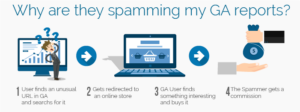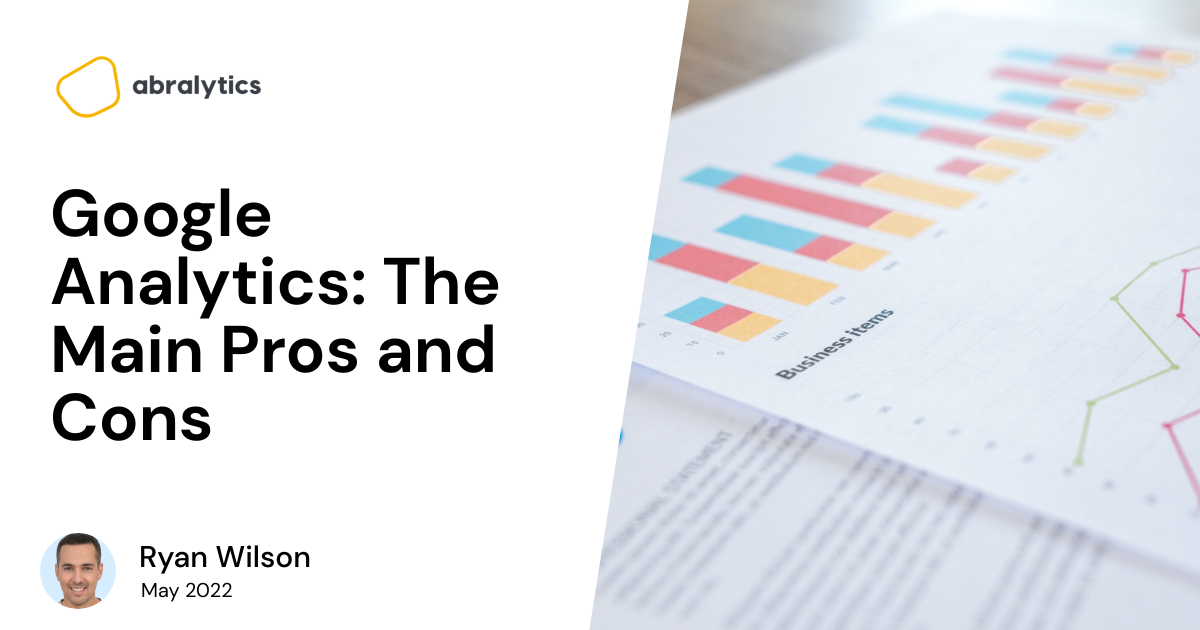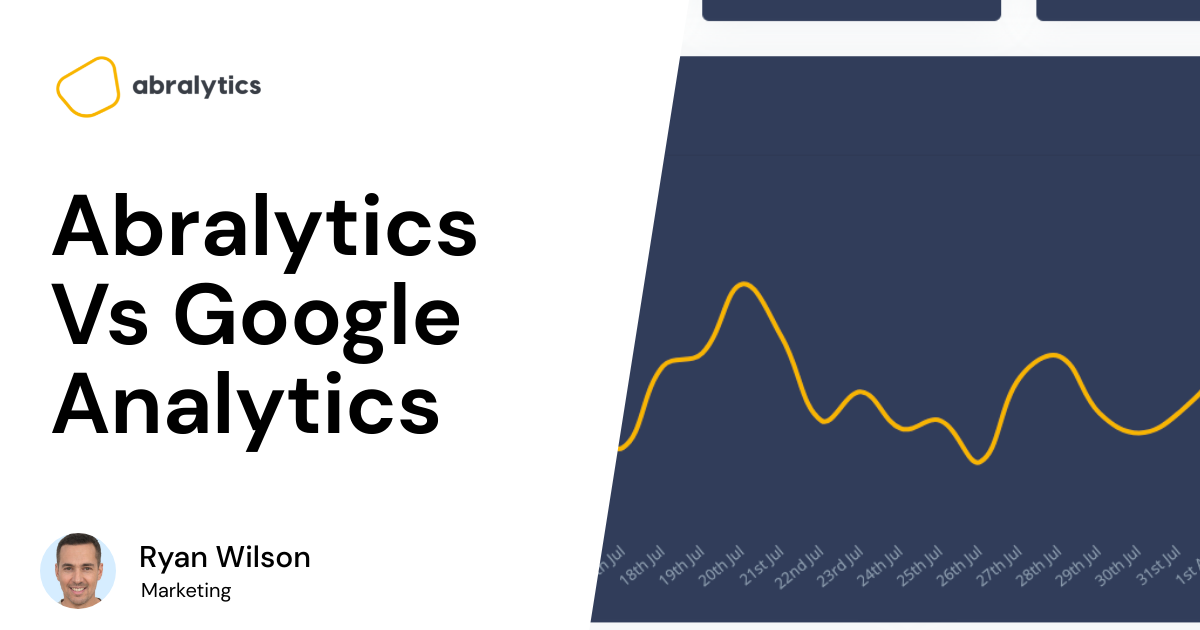How does Google Analytics work?
Google Analytics is a popular web analytics service. It collects website data and turns it into valuable reports that tell you how your website is performing, such as who your visitors are, how they got there, and how they engage with your site.
Although many google analytics alternatives like Abralytics that are available, Google Analytics is the most popular.
Like anything else in life, it has both pros and cons. This article will discuss what we love about Google analytics and what we feel are the cons, especially for the small business owner or entrepreneur.
Google Analytics Pros
1. An excellent free tool
While you can purchase a monthly subscription to Google Analytics 360, the freemium version known as Universal Analytics is entirely free.
There’s not much you can get for free these days, and the fact that Google has provided such powerful analytics software without charge is pretty incredible.
How many website or blog owners will find themselves in the dark without a free analytics option? We’d have no idea what our customers look like or how they discovered us. At best, our online marketing efforts would be a shot in the dark.
Let’s all take a moment to say, Thank you, Google, for the freebie.

Photo by Andrea Piacquadio – Pexels
2. Simple to set up
Assuming you’ve successfully created and set up a blog or website for your business, connecting Google analytics should be a walk in the park. This perk is especially true if you’ve used a website builder like Wix or WordPress.
Once you’ve signed up for a Google Analytics account, copy and paste your unique tracking code into your website, and you’re good to go.
3. Provides out of the box reports and web analytics
If you’re too busy to spend hours researching and setting up custom reports, Google Analytics has default reports that provide a simple analysis of your site.
The four main reports are Audience, Acquisition, Behavior, and Conversion. You can find these on the left side of your dashboard. For the simplest version, you can click to see the overview of each.
The audience overview report will tell you the number of page views, average session duration, and the percentage of new versus returning visitors.
The acquisition report helps you determine where your traffic is coming from. Is most of your traffic from organic search, social media platforms, or paid advertisements? The Behavior report tells you more about what a user does while on your site.
Lastly, the Conversion report shows stats like goal conversion rates and E-commerce revenue.
There’s also the option to create custom reports or edit existing ones to suit your business goals for more advanced users.
.

Photo by fauxels – Pexels
4. Manages multiple properties (that’s websites to most of us) under the same account
If you’re managing analytics for multiple clients or personal websites, there’s no need to set up a Google Analytics account for each site. Google Analytics makes it possible to keep all properties under one account and even view metrics for different areas on one dashboard.
Each analytics account can have up to a whopping 100 properties. That’s a generous amount for a completely free platform!
5. Ability to dive deeper into website data if you’re interested
Universal analytics provides a massive amount of data collection if you have the time and know-how to access it. This feature makes it great for both novices who want simplified data and advanced users.
An example of an advanced feature is event tracking. Although it’s helpful to know how long a user spends on a page, wouldn’t it be nice to know what they do?
Event tracking allows you to track and collect data like video engagement (when the video plays, pauses, stops, etc.), how far down the page they scrolled, and PDF downloads, to name a few.
Do you want to know another cool advanced feature? Enhanced e-commerce. Here, the product takes center stage, and reports are generated based on which products people view. Then, they are added or removed from carts, product revenue, etc.
.

Photo by Karolina Grabowska – Pexel
6. Regularly updates with new features
Google Analytics is constantly updating and adding new features. Although for those who aren’t so tech-savvy, this could be considered a negative.
A prime example of this is the introduction of Google Analytics 4. By 1st of July 2023, GA4 will replace Universal Analytics completely.
Will the replacement be an improvement? No doubt, but it does mean you’ll be spending a good few hours exporting accurate data and getting comfortable with the new features.
7. Tells you how people found your site

Photo by Canva Studio – Pexel
Knowing where your web traffic originates means you can concentrate your resources where they work best.
Direct traffic tells you how many visitors landed on your site by directly typing your URL into their browser.
A customer, for example, could have heard about your website over the radio, read an ad, or see a sign. This type of traffic is a good indication of how well your more traditional marketing methods work.
Organic traffic refers to visitors who found your site by typing a search query into a search engine. A high percentage of organic traffic means your SEO efforts, such as optimizing content with well-chosen keywords, are paying off.
Paid traffic is another way, where the percentage of visitors who land on your site after clicking on an ad. Measuring performance becomes increasingly crucial as more resources pour into adverts and inbound marketing.
This type of traffic is an excellent indication of how well your ad marketing campaign performs and how you should focus your resources.
“Google Analytics was too complicated. I save 2 hours every week with Abralytics.”
8. Shows you real-time traffic data
The Real-time reports allow you to see who is on your site right now and what they’re doing there. How is this useful?
Let’s say you’re running a one-day-only campaign. Real-time reporting lets you see how many users click through to the promotion turn into paying customers.
Or perhaps you have a blog with daily posts. This data can tell you which of the new content is most popular.
9. Offers an abundance of freely available resources
Google Analytics Academy is a free online series created by Google to help you learn both basic and advanced software features.
Google Analytics for Beginners covers topics like how to create an account, implement tracking code, analyze basic reports and set up goals. The advanced video series teaches you to set up advanced filters and how to create custom metrics and dimensions. There’s also a handy introduction to Google Tag Manager and Data Studio.
For the most up-to-date information, you can consult the Google support website, type in your query, and hopefully, it will solve the problem.
Since Google Analytics is such a popular platform, there is no shortage of blog articles, community forums, and Youtube videos to answer any questions which may pop up.
There is no person-to-person support center, as discussed under the cons.
Follow the path of visitors to your site. By using the Behavior Flow report, you’ll be able to see how visitors move or navigate through your website. Which page did they start on, where did they go next, and which page did they exit?
This information helps you assess which pages are most engaging and may need some work. Could adding a video or images hold their attention longer, or could you include a CTA button or link to another page to encourage further browsing?
What are the cons of google analytics?
1. A steep learning curve

Photo by iNFINITY ADVENTURE NEPAL – Pexel
Google analytics provides almost too much information, which can be overwhelming to new users. It takes a long time to learn and fully understand all the reports and metrics.
Not all of us want to spend hours learning how to decipher website analytics. Also, not many small businesses have the budget to employ someone who knows what they’re doing. This tool puts many entrepreneurs and small business owners in a tricky situation.
The solution? Why not try a web analytics tool specifically created with you in mind? Abralytics is a reasonably priced, monthly subscription service that works hard to simplify reports and provide you with focused, meaningful data.
Click here for a free 30-day trial.
2. It’s a bit of a mouth full.
When you first start using Google Analytics, you may constantly be Googling unfamiliar terms. Not everybody intuitively knows the difference between a metric and a dimension or a conversion and an event.
Even entire blog articles provide you with a glossary of Google Analytics terms. It can take hours to understand the jargon, and while you may feel brilliant afterward, the whole process can be pretty frustrating.
3. Data sampling
Google has to process an enormous amount of data from millions of websites. To reduce the volume of processing, they may do data sampling. They analyze only a portion of your website’s data and apply it to all your visitors.
Google describes data sampling this way:

Image created in Canva by M.D.
Does it make sense? Yes-when we’re talking about trees. But data sampling won’t provide the most accurate data about what’s happening on your site and who your site visitors are. While trees may be pretty similar, the behavior, likes, dislikes, and demographics of people differ significantly.
Fortunately, sampling doesn’t happen when making use of the default reports. Custom reports will apply if you’ve modified a default report.
4. Gives a limited number of hits per month
A hit is any interaction a user has on your site sent to Google. A hit could include a page view, a form submission, an e-commerce transaction, etc.
One visit to your site may result in multiple hits being sent and analyzed by Google, and the free version is limited to 10 million a month. Once you’ve reached the limit, it will no longer track anything over 10 million, and you’ll be asked to sign up for the paid version called Google 360.
5. Doesn’t comply with E.U. data protection laws
 Photo by Monica Turlui-Pexel
Photo by Monica Turlui-Pexel
If you operate a site in any European country, it may be more difficult, sometimes impossible, for you to use Google Analytics on your site.
Google saves data and personal information about E.U. residents, and everyone else, on servers in the U.S. However, they do not provide an adequate level of protection according to E.U. standards, so they are not GDPR (General data protection regulation) compliant.
The good news is that there are a host of other web analytics tools available that are GDPR compliant from the very start. Abralytics, for example, is fully compliant with GDPR, CCPA, and PECR straight out of the box.
6. Lack of customer support
 Photo by Andrea Piacquadio – Pexel
Photo by Andrea Piacquadio – Pexel
Unfortunately, customer support is only available for the paid version, Google analytics 360.
When Google analytics users encounter a problem, you’ll need to rely on Google’s support website, online forums, or Youtube videos to resolve them. This process can be frustrating as the Google Analytics platform changes so often that it is often difficult to find up-to-date information.
7. Spamming of G.A. reports
 Photo by Pavel Danilyuk-Pexel
Photo by Pavel Danilyuk-Pexel
Although Google works tirelessly to block spammers, the spammers work equally hard to find a way around it. Google Analytics is a free platform used by millions of websites, making it extremely attractive to spammers. Spambots send fake data to Google Analytics servers, known as Ghost spam.
Spam and any other irrelevant traffic lower the accuracy of your reports and can indirectly affect your SEO. If the data you are analyzing is inaccurate, it will be challenging to make meaningful decisions.
What’s the point, you may ask? Below is a diagram that shows how spammers benefit from infiltrating Google analytics data:
 Sourced from carloseo.com
Sourced from carloseo.com
8. Lack of organic keyword data
Wouldn’t it be helpful to know which keyword or phrase led the person to your site? Absolutely!
Unfortunately, Google Analytics provides very little keyword data, so it may be better to find a platform that combines the two features – both keyword and traffic data reports.
Top Tip: Another free tool from Google is Google Search Console which can easily integrate with Google analytics.
Google Search Console helps you see how your website is performing and can provide a list of the top search queries which brought visitors to your site. This tool is an excellent alternative if you don’t have the budget for an all-in-one subscription.
 Photo by Andrea Piacquadio-Pexel
Photo by Andrea Piacquadio-Pexel
9. Too much talk, not enough actionable insights
As mentioned, Google Analytics provides you with an enormous amount of data. You can spend a lot of time analyzing data and not thinking enough about what the data means.
For example, the data may show that visitors to your site are not staying there long enough. It’s a fascinating insight, but what does it mean?
Google Analytics is only as powerful as you make it. It doesn’t think for you – you’ll have to find ways to use the reports as a basis for decision-making.
The Bottom Line
Considering it’s completely free, it’s a great tool to add to your arsenal. However, the real deciding factor will be how much time and energy you want to invest in learning how the platform works.
For smaller businesses, the time it takes to learn how to decipher reports may not be worth it when simpler alternatives are available. You’ll need to be content with the hit limitations and possible data sampling for medium-sized businesses.
And for larger companies, you’ll need to decide if you’ll be willing to take the next step and pay for Google analytics 360.
Happy analyzing!




